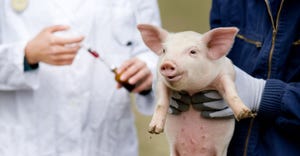There is a need for standardized gilt entry
Production records aren’t to make farms look good, they are to create a picture of exactly what is happening.
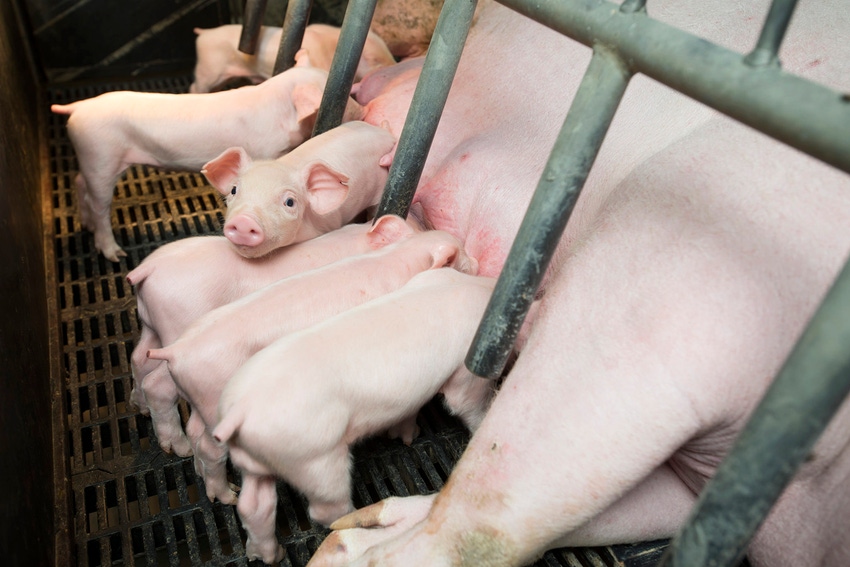
While working on a bigger project that will be a future column, something that came to the surface was the huge amount of variation in how gilts are entered into production software. This is important for a number of reasons; the following production numbers are impacted by this.
• Entry to first service
• Pigs weaned per female per year
• Female death loss percent
• Replacement rate
• Nonproductive days
There are also other numbers that would be impacted as well, like feed usage. Maybe the most important thing is the quote by Peter Drucker, “if you can’t measure it, you can’t improve it.” If farms are unable to truly measure what is happening how can it be improved?
The amount of variation was even more than we expected when looking at 757 sow farms totaling 1,642,896 females. Chart 1 shows the variation in entry to first service for each farm. It ranged from zero to 175 days, with an average of 29 days. In Chart 2, the variation also exists across farms of all sizes. Overall, 12% of the farms entered gilts the day they are bred and 15% of the farms average between one and nine days for entry to service interval on gilts. On the other end of the spectrum 15% of the farms average more than 50 days for entry to first services.
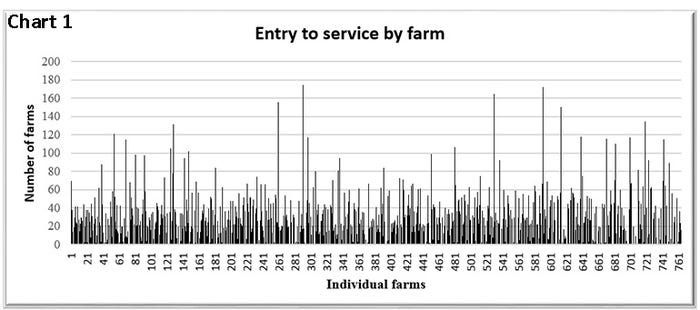
Chart 1: Entry to service by farm
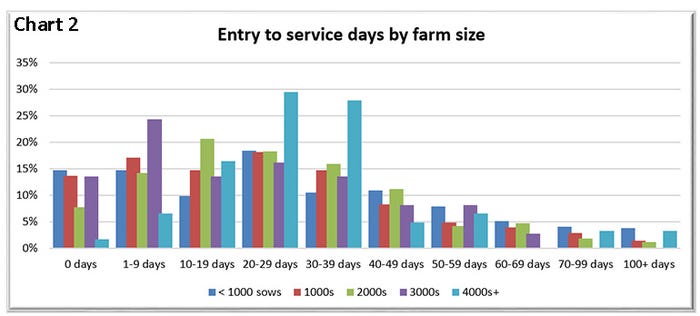
Chart 2: Entry to service days by farm size
While it is easy to understand that the farms have different policies on how to enter gilts, the variation within systems is wide as well. Chart 3 shows just one example of a 17-sow system with a range of 15 days to 75 days. The red line reflects that sow death loss for each farm with the right axis. This indicates that in this system the death loss is not aligned with entry to first service.
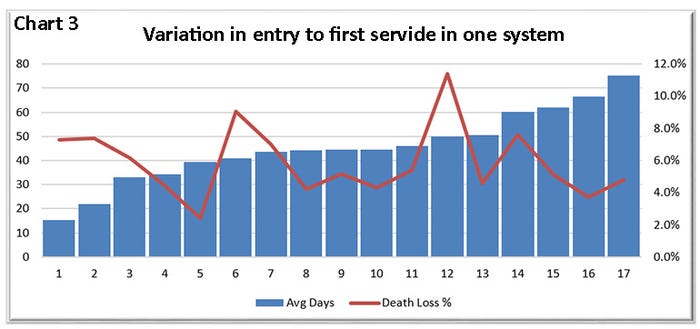
Chart 3: Variation in entry to first service in one system
Taking a step back and looking at the 757 sow farms again, there again is no alignment of days to first service with female death loss (Chart 4). In Chart 5 looking at just the death loss of gilts compared to entry to first service it shows the longer the gilts are entered the higher the death loss in the gilts. Admittedly entry to first service isn’t the best measure for the variation in gilt entry but the easiest as it is a calculated number in the software programs. This can be impacted by a couple of things, but what about the gilts that aren’t ever served? How many gilts that aren’t served are not entered into software?
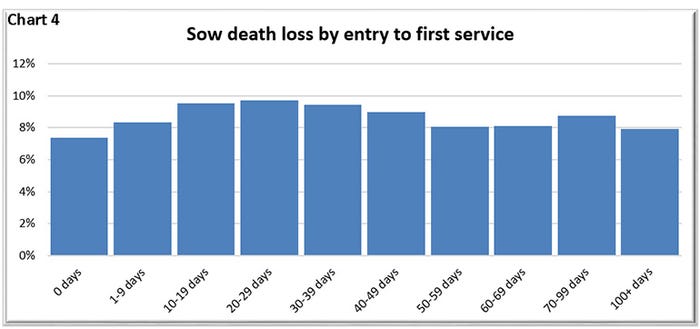
Chart 4: Sow death loss by entry to first service
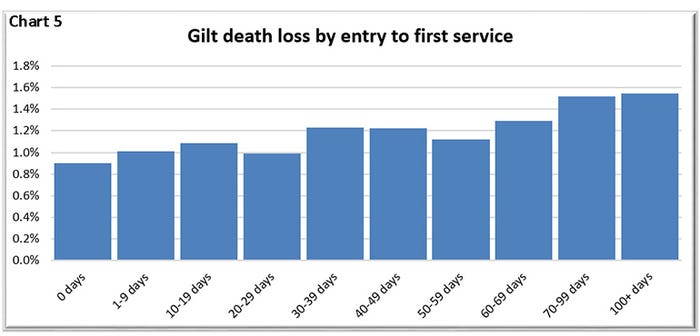
Chart 5: Gilt death loss by entry to first service
Chart 6 shows that variation for 13 farms over a three-year period of culled sows. This data are not something that is easily found on a report from most software programs. Again, showing a lot of variation that is confounded by how gilts are entered. There are farms that don’t enter any gilts into the production software until they are bred, others that enter all gilts that are moved into the gestation, others that enter them at arrival of mature gilts, others still that enter them at a younger age. Then there are farms that enter them regardless of age if they are removed from the herd, as is the case in farms 12 and 13.
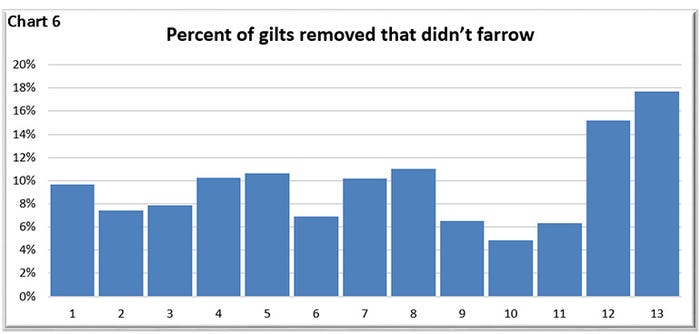
Chart 6: Percent of gilts removed that didnʼt farrow
Some will tell us they are tracking the gilts that are removed prior to breeding in some other fashion but is it data that are being used to make improvements to the operation? From a benchmarking standpoint while our data does provide an entry to first service average we acknowledge that it is a messy number to look at as outlined in this column. That is one reason we choose not to use pigs weaned per female per year as a measurement and use pigs weaned per mated female.
Entering gilts when starting boar exposure allows farms to enter a heat-no-service date into software, helping the farm know what will be available for breeding in upcoming weeks. It helps the farm keep track of the number of gilts that haven’t cycled and remove them at a given age due for reproduction failure. Entering gilts even prior to that certainly has advantages as well especially in gilt development unit management. Tracking death loss and removals is important especially if the farm struggles in those areas.
Production records aren’t to make people or farms look good, they are to create a picture of what is happening. Creating a high-quality picture means documenting exactly what is happening even if it isn’t the “best” performance. How is your farm’s picture quality?
SMS Production Index
Table 1 provides the 52-week rolling averages for 11 production numbers represented in the SMS Production Index. The numbers are separated by 90-100%, the 70-90%, the 50-70%, the 30-50% and the 0-30% groups. We also included the 13-week, 26-week and 12-quarter averages. These numbers represent what we feel are the key production numbers to look at to evaluate the farm’s performance.
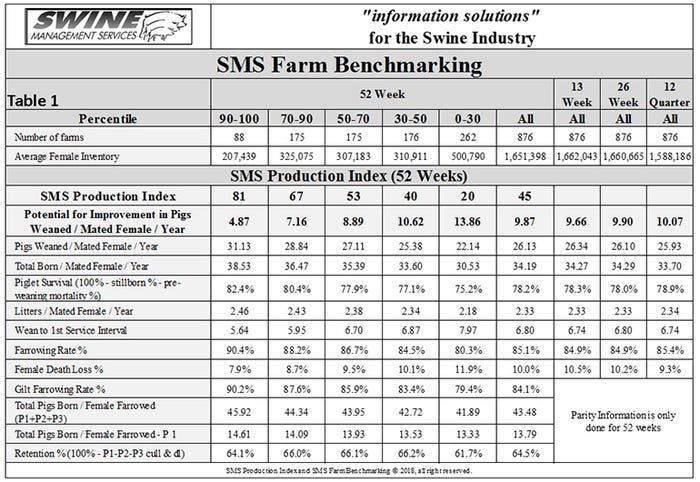
Table 1: Swine Management Services Farm Benchmarking
At SMS, our mission statement is to provide “Information solutions for the swine industry.” We feel with the creation of different SMS Benchmarking databases for all production areas we now have more detailed information to share with the swine industry. If you have questions or comments about these columns, or if you have a specific performance measurement that you would like us to write about, please contact Mark Rix, Ron Ketchem or Valerie Duttlinger. We enjoy being a part of the NHF Daily team.
Previous columns can be found at NationalHogFarmer.com.
About the Author(s)
You May Also Like

